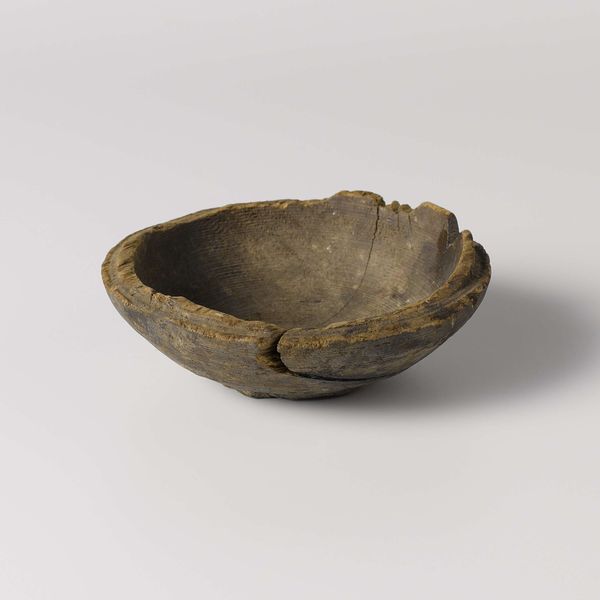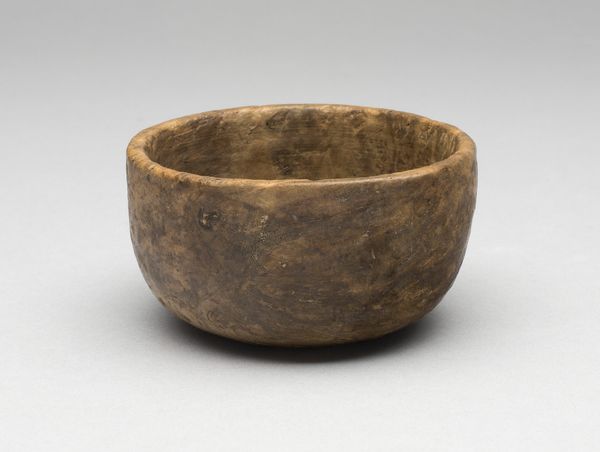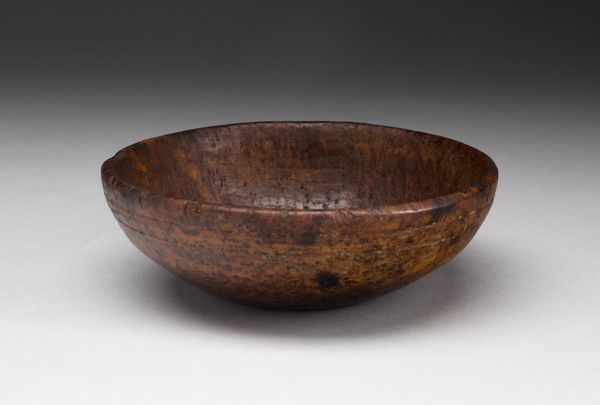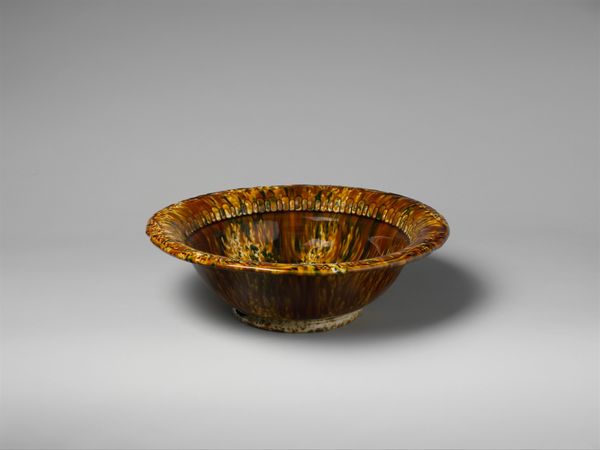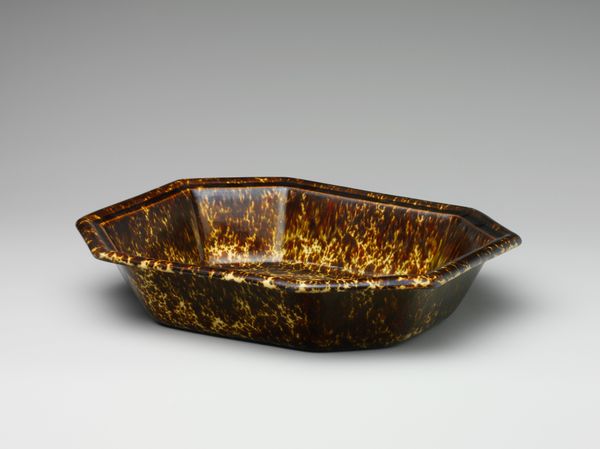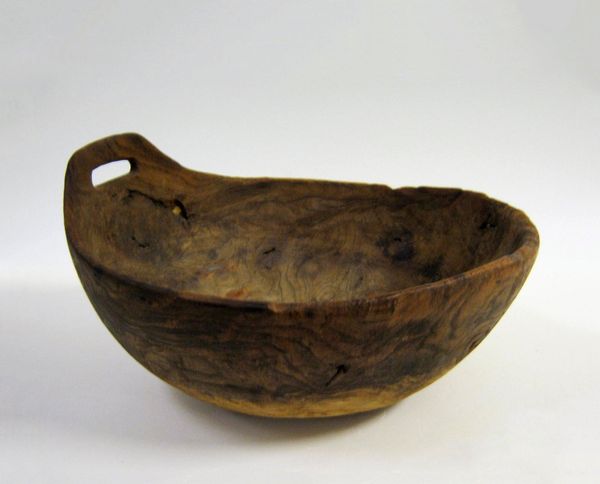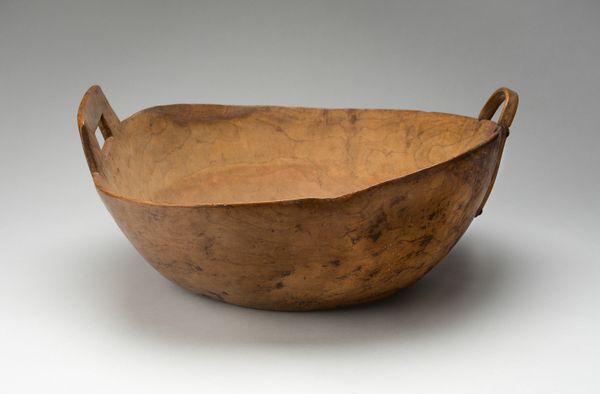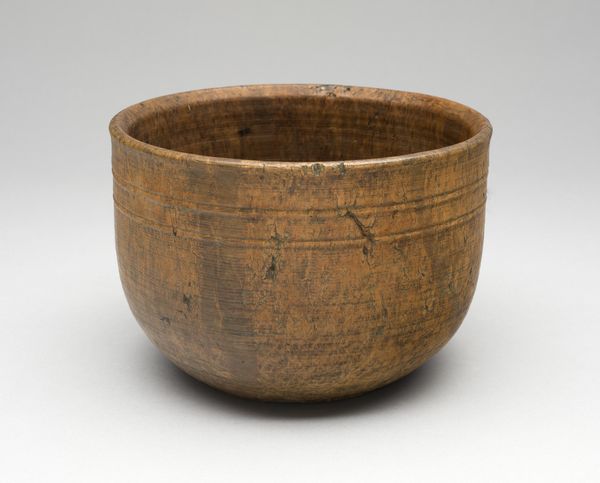
Rond drinkkommetje met laag standvlak en schuin oplopende wand zonder oren c. 1590 - 1596
0:00
0:00
ceramic, earthenware
#
ceramic
#
earthenware
#
stoneware
#
ceramic
#
product photography
Dimensions: height 5.2 cm, diameter 11.9 cm, diameter 5 cm
Copyright: Rijks Museum: Open Domain
Curator: Here we have a rather unusual piece. It’s a round drinking bowl, made of earthenware, dating back to around 1590. We don’t know who made it, sadly. It lives here at the Rijksmuseum now. Editor: Well, that’s putting it mildly! It looks less like a drinking bowl and more like something salvaged from a shipwreck, or maybe a woodland creature’s bedside table. It’s beautifully imperfect, this rough-hewn edge, pockmarked surface, it feels incredibly tactile even through a picture. Curator: Imperfection was definitely not a bug, but a feature of the time. The piece reflects a burgeoning interest amongst the wealthy merchant classes for what we would now call folk art, which pushed against courtly polish. In Dutch Golden Age society, possessing such seemingly "humble" objects almost demonstrated a cultivated and informed sensibility. Editor: Right, it's performative humbleness! I find that fascinating because it exposes the subtle power plays at work, the way something 'simple' could convey sophisticated messages of status and belonging. I keep wondering about that rim though – was it intentionally carved to have that jagged effect or has time been rather unkind to it? Curator: That's part of the intrigue, isn't it? Knowing it's ceramic, we’re presented with something of a paradox: this almost violently uneven form created in such a brittle and controlled medium. And the pinholes! It’s crying out to be understood through its texture. Editor: Maybe that roughness is part of the bowl's story, bearing witness to hands and lips meeting this simple cup. To think that something like this bowl— utilitarian yet characterful — might have been passed from hand to hand, a silent companion through daily life, grounds one into contemplating what those lives would have been like. The fact that is not only survived but ended up in a museum is a quiet victory for objects, and for those untold narratives they embody. Curator: Exactly! It pushes us to reassess what is 'museum worthy' in the first place, doesn’t it? We usually gravitate to those artworks made to be viewed in the royal courts. But in every object like this bowl is an invaluable echo of the ordinary.
Comments
No comments
Be the first to comment and join the conversation on the ultimate creative platform.
